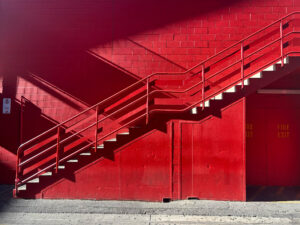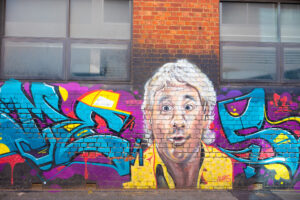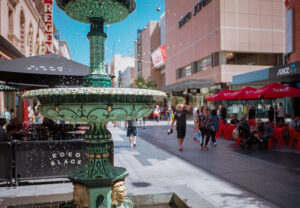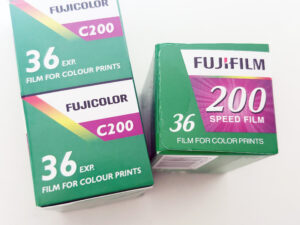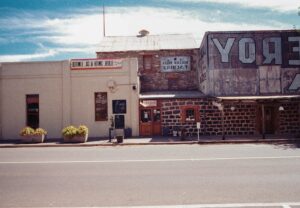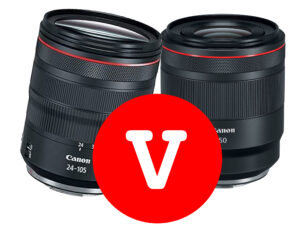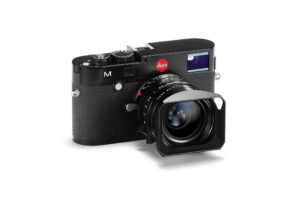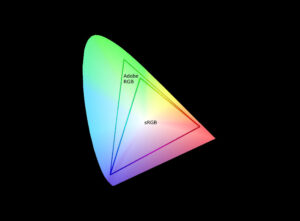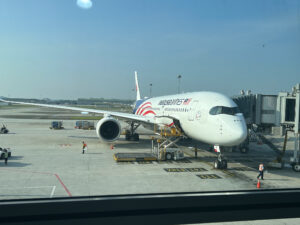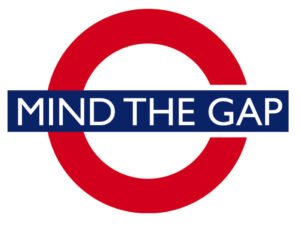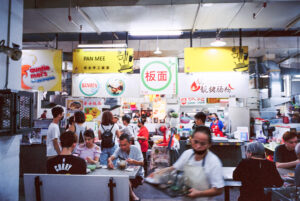This is an exciting time in FMCG marketing. Well for observers. Is anti-coke the new antidote? Let’s have a look at what has been unfolding in the battle for the place as your go to better for you soda brand. In the ever-evolving world of fast-moving consumer goods (FMCG), challenger brands are making significant strides by taking on industry giants like Coca-Cola. This case study explores how innovative beverage brands are disrupting the soda market with strategic marketing, modern branding, and savvy community engagement. As these challenger brands position themselves as the “anti-Coke,” they offer valuable insights into the dynamics of FMCG marketing and the growing demand for better-for-you products.
The Rise of Challenger Brands: A Strategic Approach to FMCG Marketing
This year we’ve seen two notable beverage brands launch aggressive campaigns targeting Coca-Cola, one of the most dominant players in the soda industry. These challenger brands are not just taking a swipe at big soda; they are strategically positioning themselves as healthier, more innovative alternatives in the FMCG market.
Comparative advertising has become a powerful tool for these brands, allowing them to deliver a clear and succinct message about their market positioning. By directly challenging Coca-Cola, they are effectively communicating their identity as the “anti-Coke” and gaining traction in a highly competitive industry.
Why Coca-Cola is the Prime Target in FMCG
Coca-Cola’s massive market presence, with a revenue stream of over $45 billion, makes it an obvious target for emerging brands. In the FMCG sector, targeting such a dominant player is akin to “fishing where the fish are.” Coca-Cola’s established market position, coupled with its expansive distribution network, makes it both a formidable competitor and an enticing target for brands looking to capture a share of the lucrative beverage market.

“Share of Throat” – Coca-Cola’s Competitive Edge
In FMCG marketing, the concept of “share of wallet” refers to how much of a consumer’s spending in a particular category goes to a specific brand. Coca-Cola, however, takes this a step further with its “share of throat” strategy—how much of what people drink is attributed to their products. This aggressive approach highlights Coca-Cola’s determination to dominate the beverage market by offering a full portfolio that maximizes their influence and presence.
Unraveling Coca-Cola’s Unbeatable Marketing Tactics
Coca-Cola’s dominance in the FMCG market is rooted in two fundamental marketing principles that provide them with an almost insurmountable competitive edge:
- Physical Availability: Coca-Cola operates more like a logistics company than a traditional beverage brand. Their sophisticated distribution network is one of the most extensive in the world, making their products easily accessible across the globe. The sheer capital investment in this infrastructure creates a significant barrier to entry for new brands.
- Mental Availability: With an annual advertising spend of around $4 billion, Coca-Cola ensures it remains at the forefront of consumers’ minds. This colossal ad budget keeps Coca-Cola top-of-mind for consumers whenever they think about buying a beverage, maintaining their stronghold in the FMCG market.
Despite these challenges, some challenger brands are making headway, particularly in the U.S. market.
Success Stories: How Olipop and Poppi are Disrupting the U.S. Beverage Market


In the U.S., two major challenger brands, Olipop and Poppi, have emerged as serious competitors in the soda market. For example, Olipop has seen its sales surpass those of Coke Zero in major retail chains—a significant achievement shared by co-founder David Lester on LinkedIn.
Key Success Factors in FMCG Marketing
- Strategic Repositioning: Initially, both Olipop and Poppi launched with a focus on gut health, promoting the functional benefits of their products. However, their breakthrough came when they shifted their focus to mimic the flavor profiles of mainstream sodas. In the competitive FMCG landscape, offering a viable alternative in taste is crucial for stealing market share from giants like Coca-Cola.
- Modern Branding: Targeting younger generations, these brands differentiate themselves with modern, relatable branding that feels less corporate and more in tune with today’s consumers. This branding strategy aligns with the growing demand for authentic, health-conscious products in the FMCG sector.
- Community Engagement: Both brands have invested heavily in building strong communities around their products. Through social media and real-world events, they have created a loyal customer base that drives trial and adoption, further fueling their growth in the market.
- Distribution and Availability: Scaling their retail footprint efficiently has been critical to their success. In the FMCG industry, effective distribution is often the difference between success and failure, and these brands have managed to expand their presence without compromising quality.
- Venture Capital: Securing substantial funding has enabled these challenger brands to compete on a level playing field. With venture capital rounds raising $40 to $50 million, Olipop and Poppi have the resources needed to challenge the dominance of billion-dollar companies in the FMCG market.
The Australian Market: Emerging Challenger Brands
The Australian market is still in the early stages of this better-for-you beverage revolution. While some brands are making progress, the market is largely focused on functional beverages with health claims, similar to the initial strategies of Olipop and Poppi.
Key Players in Australia’s Better-For-You Beverage Market





- Yumbo Soda: Positioned as a boutique soda brand, Yumbo offers flavors like Lemonade, Mandarin, and Blood Orange. With its unique branding and absence of health claims, Yumbo is well-placed to drive growth in this segment.
- Kreol Drinks: Known for its Instagram-worthy branding and innovative flavors like Pineapple, Jalapeno & Lime, Kreol is making waves with its more traditional offerings like Premium Soda Ginger Beer. This brand could potentially follow the successful strategies of U.S. challenger brands.
- Ordinary Soda: With flavors like ‘Natural Cola,’ Ordinary Soda positions itself as a premium option in the soda market. The brand has even secured international distribution, making it a strong contender in the FMCG market.
- Better Soda (Nexba): Expanding from kombucha to soda, Nexba’s ‘Better Soda’ offers flavors like Creaming Soda and Cherry Cola. Positioned in four-packs on store shelves, Nexba is one of the few Australian brands to secure significant retail presence.
- Bobby: Following the U.S. challenger brand playbook closely, Bobby is making strides in the Australian market. The brand appears to have nailed its marketing mix, making it a frequent choice for consumers.
The Challenge of Obscurity in FMCG Marketing
For these Australian brands, the biggest challenge remains obscurity. To develop this market segment to the scale seen in other countries, significant investment from both brands and retailers is essential. Additionally, building consumer demand will be crucial to their success.
The Real Threat to Coca-Cola: Genki Forest’s FMCG Strategy
While many focus on millennial-targeted brands, the true challenger to Coca-Cola may be Genki Forest—a rapidly growing Chinese beverage brand already valued in the billions. Genki Forest takes a unique approach by focusing on health and wellness while avoiding artificial sweeteners, setting it apart in the FMCG market.

Why Genki Forest is Poised to Disrupt the FMCG Market
- Substantial Funding: Founder Binsen Tang, who sold his mobile gaming company for hundreds of millions, is applying a tech-startup approach to the FMCG industry. This substantial capital investment positions Genki Forest as a serious contender.
- Rapid Expansion: Dominating in China, Genki Forest is expanding its product portfolio and distribution into Western markets, mirroring Coca-Cola’s global strategy. This “global reach, local focus” approach is key to their success.
- Obsessive Perfectionism & Risk-Taking: Tang’s meticulous attention to detail and willingness to take risks give Genki Forest a competitive edge. This approach is essential for any brand looking to challenge a giant like Coca-Cola in the FMCG sector.
The Future of Challenger Brands in FMCG
As this battle between challenger brands and industry giants unfolds, it’s clear that only a few will emerge as true competitors to Coca-Cola. Genki Forest stands out as a brand with the potential to make a significant impact on the global FMCG market. However, continued investment, strategic marketing, and consumer engagement will be critical for these challenger brands to succeed.
For consumers, the growing variety of better-for-you beverages offers exciting new choices. By supporting these innovative brands, we can help shape the future of the FMCG industry and drive demand for healthier, more sustainable products. If you haven’t yet explored the offerings of these challenger brands, now is the perfect time to discover what the future of soda might look like.

